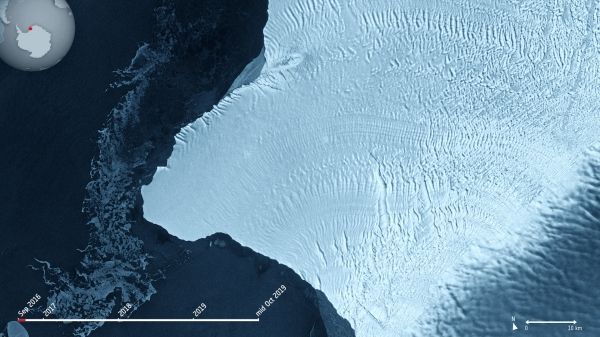The Copernicus Sentinel-1 mission takes us over cracks in the Brunt ice shelf, which lies in the Weddell Sea sector of Antarctica.
Using radar images from the Copernicus Sentinel-1 mission, the animation shows the evolution of two ice fractures from September 2016 until mid-October 2019. The large chasm running northwards is called Chasm 1, while the split extending eastwards is referred to as the Halloween Crack.
First spotted on 31 October 2016, the Halloween crack runs from an area known as McDonald Ice Rumples – which is where the underside of the floating ice sheet is grounded on the shallow seabed. This pinning point slows the flow of ice and crumples the ice surface into waves.
Chasm 1 on the other hand has been in place for over 25 years. It was previously stable for many years, but in 2012, it was noticed that the dormant crack started extending northwards.
Continue reading at European Space Agency
Image via European Space Agency


